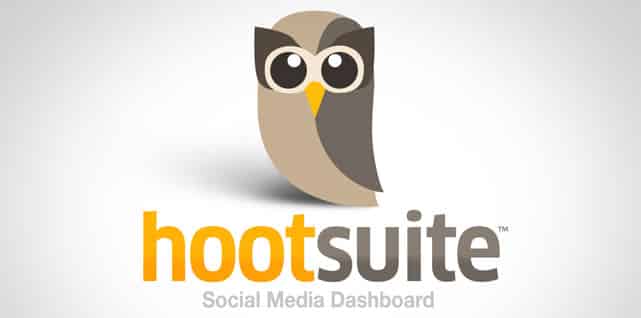When we last discussed social media, we went over the basics of how to determine the impact of your social media efforts, and I briefly mentioned True Social Metrics as a tool that can help measure your Conversation Rate, Amplification Rate and Applause Rate. Today, we’ll be digging into a few additional tools that can help you understand how successful your social networking is.
Facebook Insights
I have a love/hate relationship with Facebook Insights. I love it because there’s a huge amount of data available on how people interact with your business on Facebook. I hate it because many of the metrics that Facebook has chosen to measure are convoluted, redundant or just plain unnecessary.
Facebook is in a tough position because they’re trying to build metrics for something that, until recently, hasn’t needed to be measured. I love data, but Facebook has taken it to the extreme and made the process of finding useful insights incredibly overwhelming for standard users.
Have you ever exported your page’s data from Facebook? It drops 67 columns of different metrics into a spreadsheet – and that’s just the first of 70 separate tabs! Do I really need to know my Daily Viral Impressions? What does that even mean?
Luckily, there’s a great article over on the HubSpot blog that gives an explanation on how to whittle down those 67 columns to a couple of key metrics. I highly encourage you to read it.
To summarize the article: You should export all your data, delete almost everything that Facebook gives you and calculate your Actual Total Reach (Lifetime Likes plus Friends of Fans). Compare this to your Daily Page Consumptions (which counts the number of times users click on any of your content) with a pretty little Excel chart and you’ve got a good idea of how things are going on your Facebook page.
In this example, our Actual Total Reach is skyrocketing (yay!), but our Page Consumptions are trending down (boo!). Looks like the content we’ve been posting hasn’t been very engaging. So let’s forget our giant data dump for now and go back to Insights.
By looking at the number of Engaged Users and the Virality of individual posts in the chart above, we can see that the big spike from 9/13 and a smaller spike on 9/16 on our Daily Consumptions graph correspond with a couple popular posts about our broken coffee machine (Don’t worry – it’s since been fixed). The fans have spoken! More posts about coffee coming your way!
The great thing about Facebook Insights is that if you’re willing to put in the time and effort, you can find great information about what’s really working on your page and what types of posts resonate best with you fans.
The problem is that Facebook Insights was built in a way to help drive businesses towards using Facebook Ads. It’s not an impartial judge of your success. Facebook wants you to be confused by Reach and Impressions and Virality, so you decide to just pay them to push all your content for you.

Followerwonk
Followerwonk takes a unique look at Twitter data. It doesn’t provide direct insights on how successful your individual posts are, nor does it provide much in the way of measuring your overall success either. I guess it doesn’t exactly fit in with this article, but I want to take some time to discuss it here because the data provided can go a long way toward building not only a successful social media strategy, but a successful Internet Marketing strategy as well.
The heart of Followerwonk’s data comes from digging through your followers and looking at things like when they’re active, how influential they are, where they’re located, how many followers they have, etc.
When @prontomarketing’s followers are most active. At one quick glance, we can see that we should be scheduling our tweets to go out between 11am and 4pm EST.
Here’s another graph showing how many followers our followers have. This might not seem so useful at first, but all those links on the right will show you exactly which accounts fall into each segment. Who’s our follower with 1 million followers? HootSuite. And guess what, we already have a strong relationship with them. Maybe it’s time to talk to them about writing a case study with us. Or maybe you’ll see an article about HootSuite on this blog in the near future and we’ll ask them to share it with their 1 million followers. Now that’s smart Internet Marketing!
There’s a ton of insightful data available from Followerwonk reports. I just created another report comparing our followers to one of our competitor’s and found that we have 150 followers in common. Don’t you think Sales would love to get their hands on a list of leads like that? Followerwonk has a freemium payment plan, so I highly suggest that you go play around with it.

HootSuite
There’s one more tool that deserves a mention here. HootSuite is one of the most popular tools out there for management of multiple social networks. You can post to Facebook, Twitter, Google+, LinkedIn and more from one location while monitoring replies, mentions and messages on these networks.
Their custom reporting solution allows you to pull in data from Facebook Insights, Twitter and Google Analytics letting you pick and choose exactly which metrics you want. HootSuite is the closest you can get to having all your social media data in one location.
They also have the added benefit of grabbing data for their Ow.ly URL shortener tool. This lets you see which of the links you shared drove the most visits to your site and their built-in Google Analytics URL Builder means that you can easily track your social traffic as Campaigns in Google Analytics (more on this in the final article of this series next week).
Think I can get @hootsuite to tweet about this now?
The perfect tool
In my opinion, the perfect tool for measuring social media success doesn’t exist right now. HootSuite comes close, but their Google Analytics integration isn’t as robust as I’d like and depending on which plan you sign up for, reports can get very expensive.
In an ideal world, someone like HootSuite or Klout would buy True Social Metrics’ tool and start working towards becoming the one place people go to for all their actionable social media data. But for now, we’ll need to pick and choose our data from various services.
Next week, we’ll dive into Google Analytics and try to dig up some numbers that can help determine your social media ROI or at least prove to your boss that you’re not just playing on Facebook all day.
Tim Kelsey
SEO & Social Media Manager


